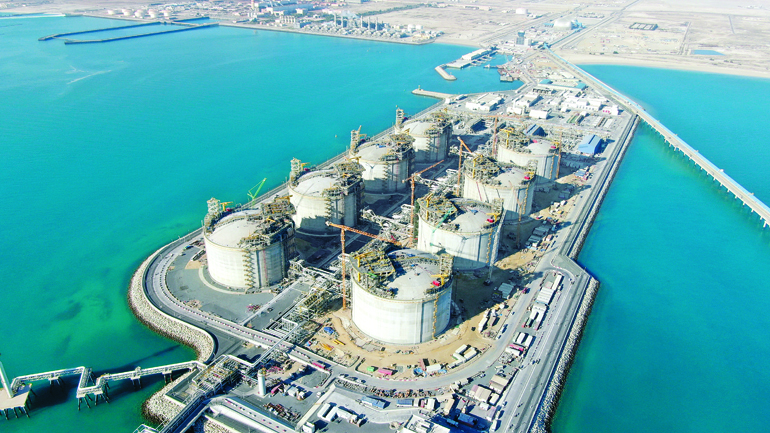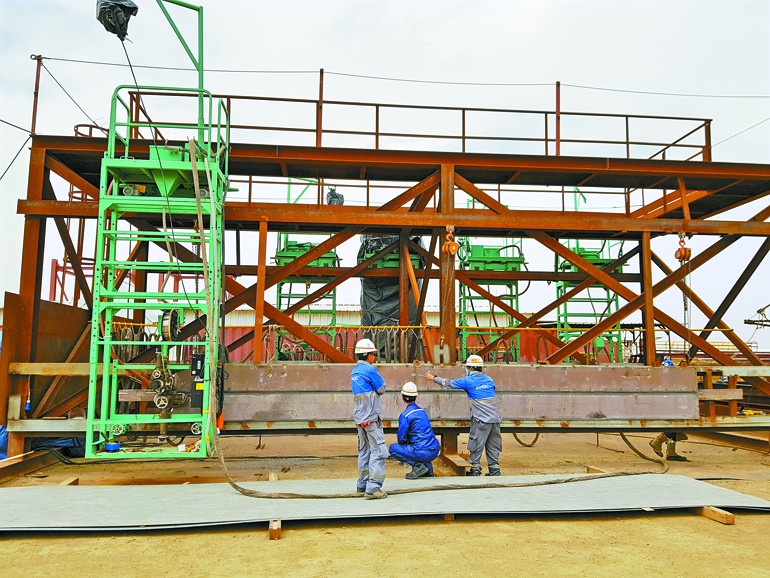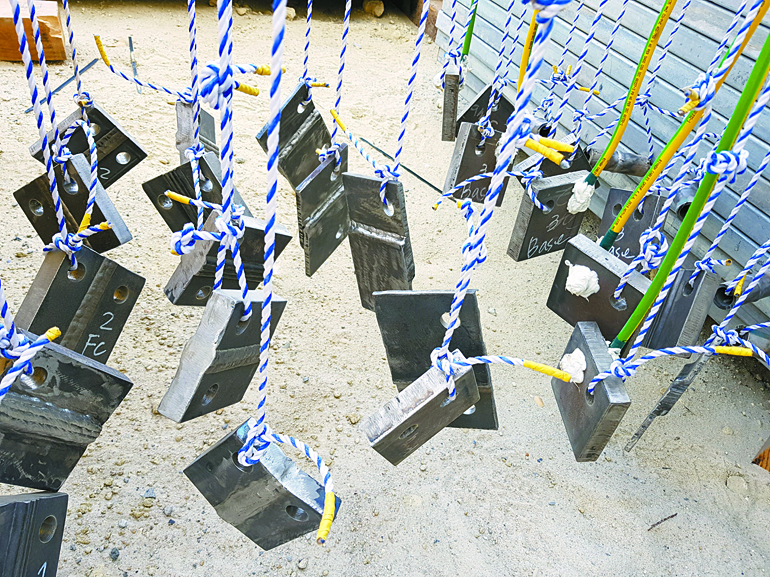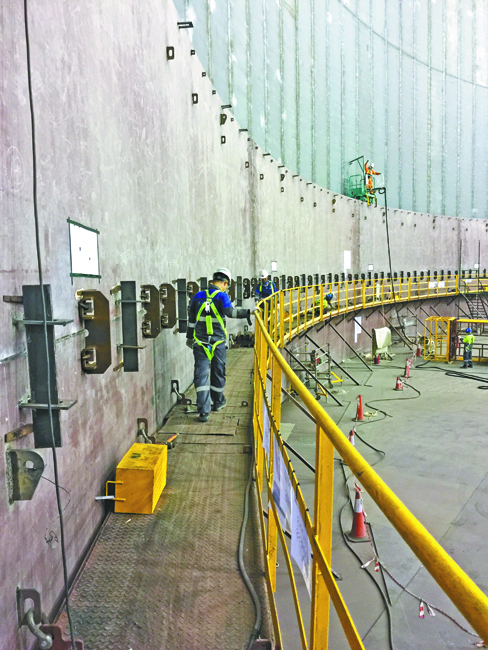
Latest News
- Hyundai E&C Signs PPA for Solar Renewables with Glennmont D&D Solar Holdings
- Hyundai E&C to Embark on UK SMR Project forging Korea-US-UK Technology Alliance
- Hyundai E&C Consolidates Leading Position in Concrete Safety and Quality Technology
- Hyundai E&C Selected as Preferred Bidder for Large Nuclear Power Plant in Bulgaria
- Hyundai E&C Attains “Leadership A” in CDP's Climate Change Assessment
[Our Project & People] Kuwait EPCC of Al-Zour LNG Terminal project emerges as a new base for clean energy (1)
The Al-Zour petrochemical complex is situated along the Al-Zour coast, 90 kilometers southeast from Kuwait’s capital, Kuwait City. This large-scale gas plant is a result of collaboration between Hyundai E&C and Hyundai Engineering. The Kuwait EPCC of Al-Zour LNG Terminal (KALM) project includes the reclamation of the seven-million-cubic meter sea, and the construction of eight LNG storage tanks with a capacity of 225,500 cubic meters and a regasification facility with a capacity of three billion cubic meters of gas per day on the reclaimed land. Hyundai E&C was awarded the project valued at over three trillion won in March 2016 by joining hands with Hyundai Engineering and Korea Gas Corporation. This remarkable achievement was attributable to Hyundai E&C’s extensive experience in plant and infrastructure construction and technological prowess as well as Hyundai Engineering’s excellent design capability with regard to petrochemical plants. The KALM project is the first LNG project that Korea’s primary builder conducted in the overseas markets. Hyundai E&C has so far built a variety of portfolios in the domestic market, such as Phases 2 and 4 of the Incheon LNG Terminal project, Phase 3-2 of Plant Unit 2 of the Pyeongtaek LNG Terminal project, Phase 2-2 of the Tongyeong LNG Terminal project, and Phase 2-2 of the Samcheok LNG Terminal project.

The world’s first simultaneous construction of eight LNG storage tanks
A vast construction site for Kuwait’s first LNG import terminal stretches out on the wide sea, 90 kilometers southeast from Kuwait City, the country’s capital. There are the LNG storage tanks which are laid out neatly and grandly. After the processes ranging from the foundation work and construction to the removal of air inside the storage tanks and drying after hydrostatic test, they are finally all ready for operation. Hyundai E&C divided the entire process into Stages 1 and 2 in order to build eight LNG storage tanks. As of now, Hyundai E&C completed the tank construction and is working on the preparation process to store LNG for Stage 1 while making efforts to finish up the tank construction for Stage 2. A total of 97.12 percent of the construction was completed. The construction was supposed to be finished at the end of February in 2021, but the completion of the construction was rescheduled to next year due to the pandemic. Korea’s primary builder is making concerted efforts to manage the construction site in a safe and perfect way.

The simultaneous construction of the eight LNG tanks, each outer tank of which is 93.5 meters in width and 58.42 meters in height, was an unprecedented challenge. As each tank required the placement of thousands cubic meters of concrete, such concrete placement often took place five times a week to construct the eight LNG tanks at the same time. Since the concrete placement cannot stop once it starts, it was quite challenging to set up the work schedule despite poor weather conditions such as strong wind and sandstorm. Against the difficult circumstances, Hyundai E&C demonstrated extraordinary capabilities. Hyundai E&C solved various interferences related to buttresses requiring complicated steel designs, consulted rebar arrangement and conducted a number of mock-up tests to preclude relevant problems from occurring. Based on its construction expertise, Hyundai E&C established the construction plans and they stood out at the construction site.

A wide range of construction methods were applied to the KALM construction site in an aim to deal with the mega-sized and difficult project to undertake. Among them, the rigid inclusion method includes the load transfer platform designed to absorb and spread the applied loads vertically instead of connecting the upper structure to the piles. The distribution of the loads between the ground and piles can decrease the number of the piles and rebar required and cut down on the construction period. The construction method enabled the KALM project to decrease the construction period by 2.8 months and the construction costs by 52.9 billion won, which led to securing a competitive edge in receiving orders to build mega-sized LNG storage tanks.

As the KALM project is the KIPIC’s (Kuwait Integrated Petroleum Industries Company) first LNG terminal construction project, individual capabilities of Hyundai E&C’s executives and staff members have served as an important driving force to operate and manage the construction site. In order to clear up the doubts of the client with no experience in LNG terminal construction, they provided numerous data and forged a mutually trusted relationship with the client through experience-based persuasion. Although they had to take on a bigger burden and responsibility than ever, they are making all-out efforts to solidify the global reputation of Hyundai E&C with various new construction methods and knowhow.

